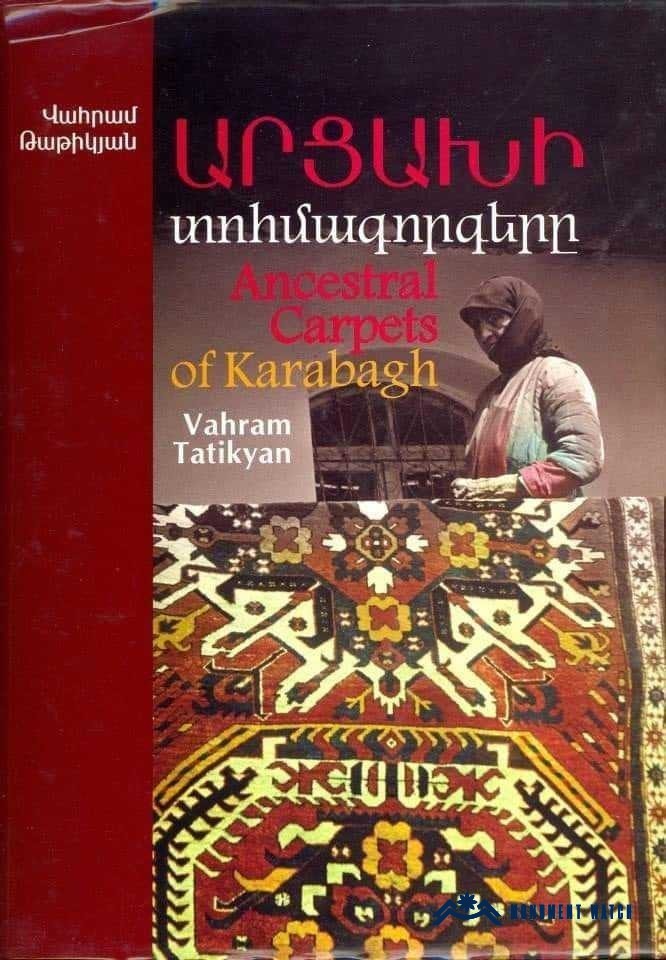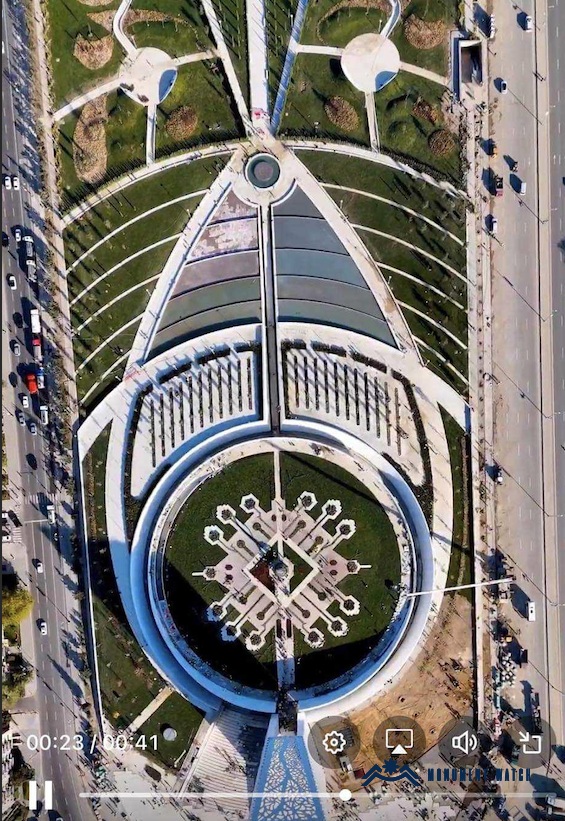The ornament of the Armenian Artvagorg in the Azerbaijani “Victory Park”
Azerbaijan has installed a monument featuring the traditional Armenian “Artsvagorg” ornament in the center of its “Victory Park,” a site that glorifies the military conquest of Nagorno-Karabakh and the ethnic cleansing of the Armenian population, and presented it to international observers at the 29th Conference of the Parties to the United Nations Framework Convention on Climate Change (UNFCCC) COP 29
(https://x.com/statikyan/status/1854865956662624508?s=46&fbclid=IwZXh0bgNhZW0CMTEAAR03LxQ5p3vjUMmTLKHYatxqH1jqwEc-ukKTq5MF8vyLsQUaiKlA2ietePo_aem_xeePhERpYkFDS3p2Uile9Q).
As noted by political scientist Sosi Tatikyan, this action constitutes an act of military aggression and the construction of yet another monument in Azerbaijan that glorifies ethnic cleansing.
It should be noted that the ornament at the center of this square is the core pattern of the “Artsvagorg,” originating from the Jraberd (Джраберд, Jraberd) carpet-weaving center of the Armenian feudal period in Artsakh.
The principal ornamental motif of the “Artsvagorg” is the Eagle. According to experts, it represents one of the images of the winged Sun or the Urartian deity Khaldi, later associated with the Zoroastrian Ahura Mazda. Such winged Sun iconography has existed in Armenian art since antiquity and is also evident in the late medieval Armenian carpets of Artsakh–Syunik. In foreign scholarship, it is referred to as “Tschelaberd” (see Adil Besim, Mythos und Mystik, Alte und antike Textilkunst, Wien, 1998, p. 22).
Our Response
It should be emphasized that the appropriation of Artsakh’s carpet-weaving traditions is part of an ongoing, state-led policy in Azerbaijan, which has recently been advanced on various international platforms.
The people of Artsakh, who have a long-standing tradition of carpet weaving, are currently deprived of the opportunity to continue their cultural practices and contribute to their community’s cultural life due to forced deportation. This constitutes a severe violation of the cultural rights of Artsakh Armenians, as enshrined in Article 27 of the Universal Declaration of Human Rights and Article 15 of the UN International Covenant on Economic, Social, and Cultural Rights. Thus, Azerbaijan’s forced deportation of Artsakh Armenians has both suspended their carpet-weaving practice and deprived them of the opportunity to enrich and preserve their intangible cultural heritage.
By distorting historical facts, Azerbaijan effectively negates the authentic heritage of this tradition, stripping it of its genuine identity. This violates UNESCO’s principle of heritage authenticity, as outlined in the 1994 Nara Document on Authenticity, which mandates that the knowledge underlying heritage must be accurate and trustworthy and must be preserved with reliable information.
It is also worth recalling that in May 2024, an exhibition titled “Azerbaijani Carpets: The Genetic Code of Memory” opened at the Museum of Decorative Arts and Design in Riga, Latvia. Its principal exhibit was devoted to Armenian carpets from the regions of Nagorno-Karabakh and Armenia. Notably, the symbols, depictions of animals and birds, compositional patterns in decorative design, and associated beliefs—presented as Azerbaijani—were originally used in Armenian carpet-weaving culture and have a centuries-old history. Moreover, in November 2024, a similar exhibition was opened in the Georgian capital, Tbilisi.
(https://media.az/culture/v-tbilisi-otkrylas-vystavka-azerbajdzhanskih-kovrov).
By appropriating Armenian heritage, Azerbaijan contravenes the 2005 Paris Convention on the Protection and Promotion of the Diversity of Cultural Expressions and the 1965 UN Convention on the Elimination of All Forms of Racial Discrimination.
The pursuit of this state-sponsored policy in Azerbaijan undermines the identity of the Armenians of Artsakh and impedes the transmission of their cultural heritage to future generations.

